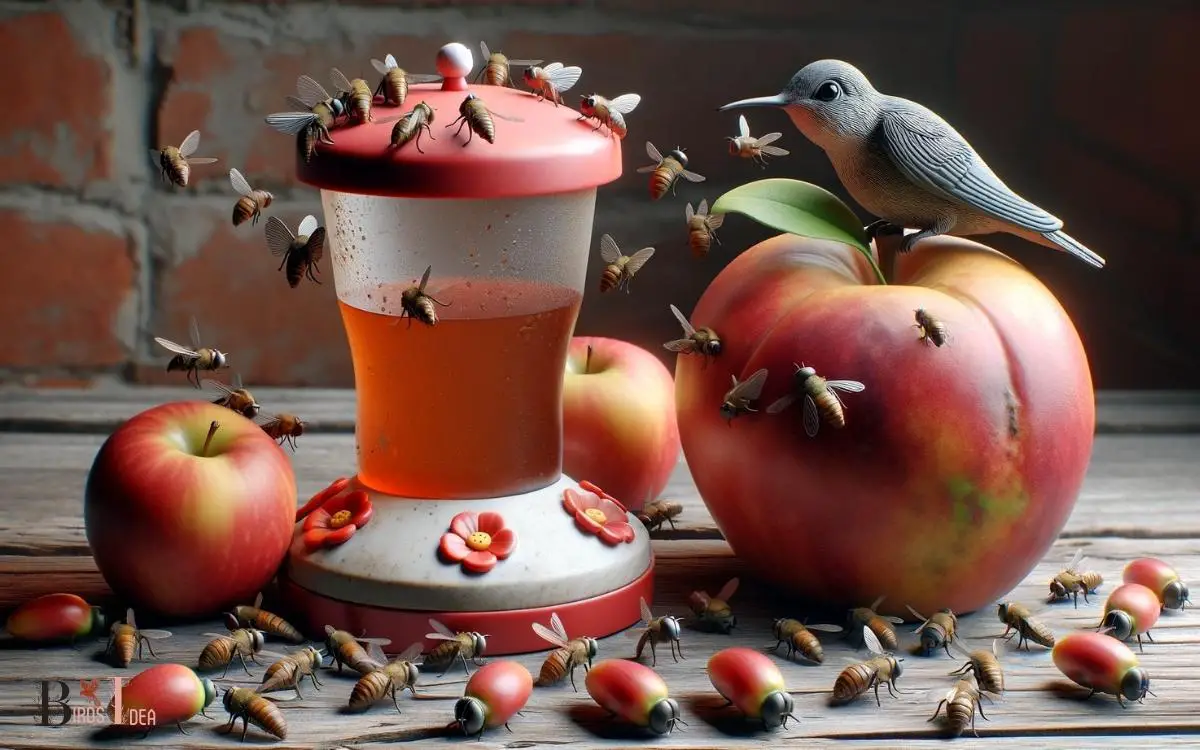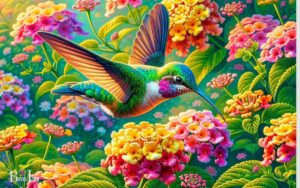How to Attract Fruit Flies for Hummingbirds? Complete Guide
To attract fruit flies for hummingbirds, set out overripe fruit or create a fruit fly feeder using a container with small holes, allowing the scent to draw the flies in. This natural food source will entice hummingbirds who feed on these insects for protein.
Hummingbirds are often recognized for their love of nectar, but they also require protein in their diet, which they get from eating small insects like fruit flies.
You can attract fruit flies by:
It’s essential to place these attractants close to hummingbird feeders or flowering plants to create a one-stop feeding spot for the birds.
By setting up a simple fruit fly attraction station, you’re providing a dual food source for hummingbirds—nectar for energy and insects for protein.

Key Takeaway
Understanding Fruit Flies’ Behavior
Understanding fruit flies’ behavior requires careful observation and analysis of their movement patterns and feeding preferences.
Fruit flies, scientifically known as Drosophila melanogaster, exhibit distinct behaviors that are crucial for their survival and reproduction.
By closely monitoring their movements, researchers have observed that fruit flies tend to be attracted to ripened fruits due to the release of fermenting odors.
Additionally, their feeding preferences vary based on the stage of their life cycle, with adult flies preferring liquids while larvae feed on decaying organic matter.
Observing their behavior in response to environmental stimuli, such as light and temperature changes, can provide valuable insights into their foraging and mating habits.
Through this meticulous study of fruit flies’ behavior, researchers can gain a deeper understanding of their ecological role and develop effective strategies for managing fruit fly populations.
Creating a Fruit Fly Habitat
Observing fruit flies’ attraction to ripened fruits is essential for creating a suitable habitat for them.
To attract and maintain fruit flies in a specific area, it’s important to consider the following:
- Ripened Fruit: Place ripe fruits like bananas, apples, and peaches in a bowl or container. Fruit flies are attracted to the sweet, fermenting aroma of overripe fruits, making them an ideal food source.
- Moisture: Fruit flies thrive in moist environments, so misting the area with water or placing a damp sponge nearby can help create the right conditions for them.
- Warmth: Fruit flies prefer warmer temperatures, so keeping the habitat in a sunny spot or using a heat lamp can encourage their presence.
Fruit Fly Attractant Plants
Fruit flies are attracted to a variety of plants known for their fermenting fruits and decaying organic matter.
These plants emit odors that entice fruit flies, making them an essential part of the hummingbird diet.
If you want to attract fruit flies to your garden and, consequently, hummingbirds, consider planting some of these fruit fly attractant plants:
| Plant Name | Common Features | Best Growing Conditions |
|---|---|---|
| Bananas | Emit a strong fruity odor | Warm and humid climate |
| Apples | Sweet, fermenting scent | Moderate temperatures |
| Grapes | Sweet, fermenting aroma | Sunny and well-drained |
Maintenance and Monitoring
To maintain and monitor the attraction of fruit flies for hummingbirds, regularly inspect and replenish the fruit fly attractant plants in your garden.
This ensures a constant food source for the hummingbirds and encourages the presence of fruit flies.
Additionally, keep an eye out for any signs of overripeness or decay in the attractant plants, as this may deter fruit flies and, in turn, hummingbirds.
In order to effectively monitor the fruit fly population, consider placing small traps near the attractant plants.
These traps can be as simple as a cup filled with apple cider vinegar and a few drops of dish soap, which will attract and trap fruit flies.
Finally, observe the behavior of hummingbirds around the attractant plants to gauge the success of the fruit fly attraction.
Benefiting Hummingbirds
Hummingbirds greatly benefit from the abundant supply of fruit flies attracted to the garden. Fruit flies are a crucial food source for hummingbirds, providing essential protein and nutrients necessary for their survival and energy.
By attracting fruit flies to the garden, individuals can create a natural and sustainable food source for these magnificent birds.
Observing hummingbirds feeding on fruit flies can be a delightful and rewarding experience for any bird enthusiast.
| Benefits for Hummingbirds | Description |
|---|---|
| Rich Protein Source | Fruit flies are high in protein, essential for hummingbirds’ growth and energy. |
| Essential Nutrients | Fruit flies provide vital nutrients, supporting the overall health of hummingbirds. |
| Natural Feeding Behavior | Feeding on fruit flies allows hummingbirds to exhibit their natural foraging behaviors. |
| Sustainable Food Source | By attracting fruit flies, individuals can create a sustainable food source for hummingbirds. |
Conclusion
Attracting fruit flies for hummingbirds is a simple and effective way to provide them with a natural food source.
Just like a well-stocked pantry draws in hungry guests, a carefully cultivated fruit fly habitat will draw in hummingbirds looking for a tasty snack.
By understanding fruit flies’ behavior, creating a suitable habitat, and maintaining it properly, you can help support the hummingbird population and enjoy the beauty of these tiny, fluttering creatures in your yard.






